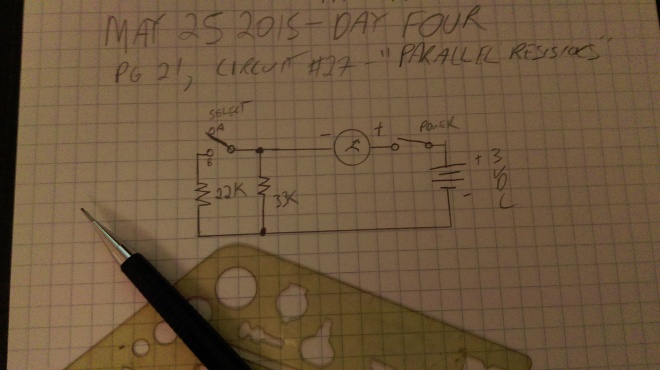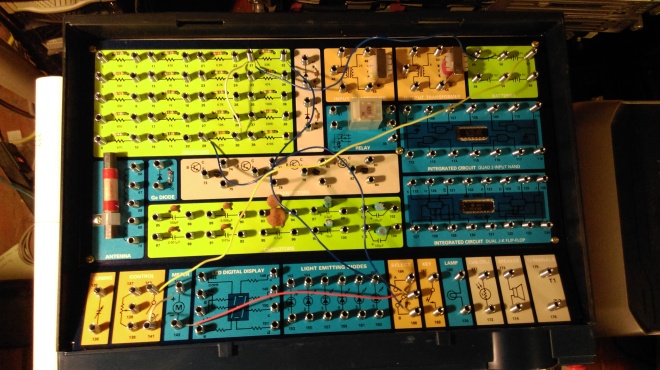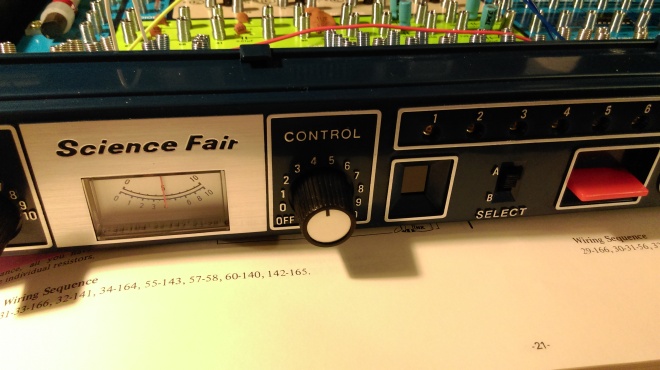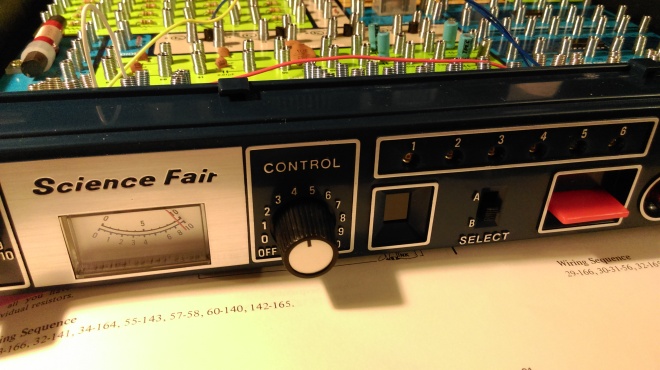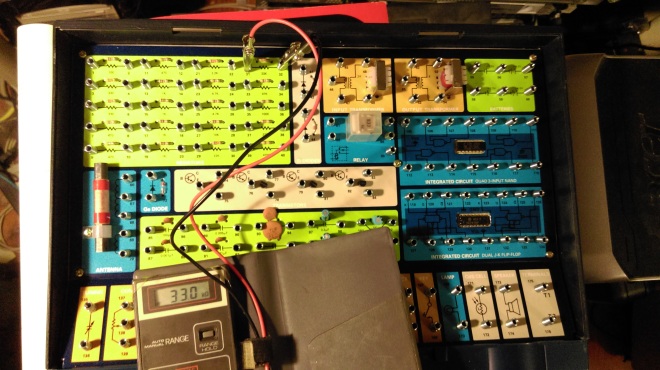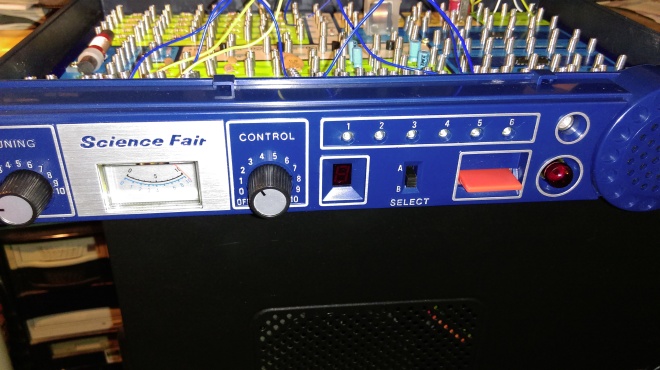Today’s circuit is building on the last circuit’s theme, showing us the properties of resistors in parallel instead of series. Let’s look at today’s diagram:
Pardon the dimness of today’s photo, I’m worn out from working on my car and didn’t realize it was so dim! Anyway, notice the way the 22K and 33K resistors are arranged; like parallel lines. When the select switch is set to B, current flows across one terminal of each resistor, then round to the other terminal of each resistor, instead of flowing through one resistor and then the other. If the select switch is set to A, current flows only through the 33K resistor. The diagram also shows the requisite battery, supplying 3VDC today, a power switch, and the meter. Here’s what it looks like all wired up:
So, what can we find out when we power the circuit up? Here’s the meter readout with the selector set to A:
The meter reads about halfway up the scale. So, let’s set the selector to B:
Woah, almost all the way at the top of the scale. What’s going on? What the book explains is that, in a parallel circuit, only part of the current goes through each resistor, and that in a parallel circuit, the total resistance is always -less- than the value of the lowest resistor connected in parallel. So the total resistance is something less than 22 kilohms, in this case. The Wikipedia article on parallel circuits does a good job of explaining this in more detail, including how to use Ohm’s law to calculate the resistance. At this stage in the game for me, I’m more interested in the hands-on results than the mathematical details of the physics (though I do read the articles as I write this, to attempt to learn some of it, as I encourage you to do, too!), so I whipped out one of my trusty multimeters to test the concept:
So, what you’re looking at above is the readout, in kilohms, of the 33K resistor. Unsurprisingly, the meter reads 33kohms. Next, I wired the two resistors in parallel, and attached the meter:
This fits pretty well with the explanation; a 22K and 33K resistor, wired in parallel, are reading 13.09 kilohms, a good bit less than the value of the smaller 22K resistor. If you want, check my practical work by using Ohm’s law, see what you find out. Either way, I’ll see you tomorrow with a new circuit.

